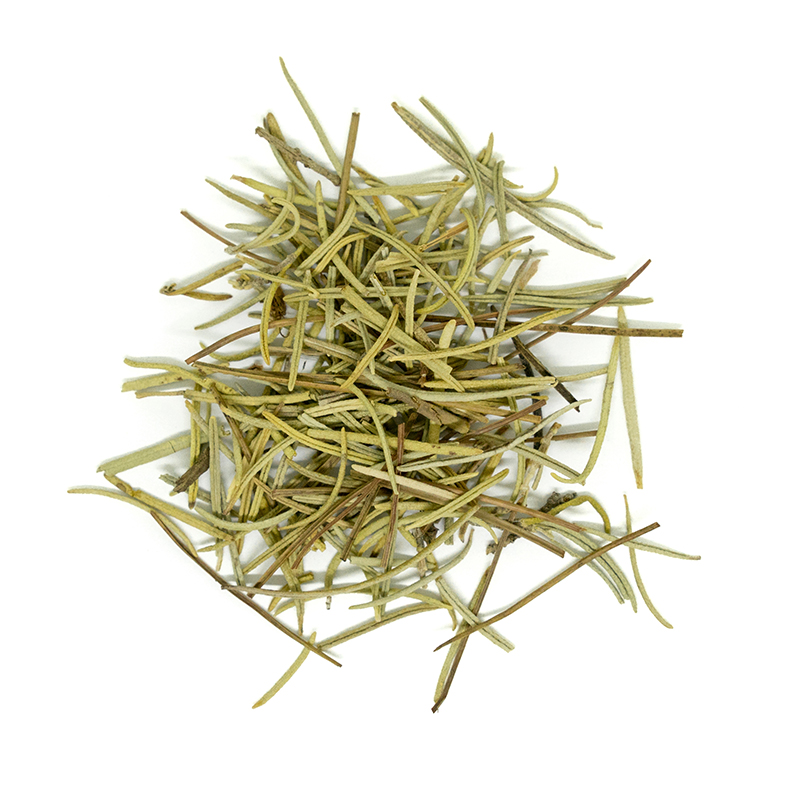-
Description
Cultivated for over 5,000 years, Rosemary plant history is understandably steeped in legend, myth, and folklore. Rosemary has been used since the time of the early Greeks and Romans. Greek scholars often wore a garland of the herb on their heads to help their memory during examinations.
Rosemary is native to the dry, rocky areas of the Mediterranean, especially along the coast. The genus name Rosmarinus derives from the Latin words ros and marinus which together translate to “dew of the sea.”
Our Rosemary is wildcrafted from the Atlas mountains. It is harvested using traditional methods usually in summer or autumn. It is sun-dried in rural communities before being prepared for shipment.
It is a wild plant that grows essentially in the forest areas of eastern Morocco and the High Atlas. Rosemary can enhance poor soils and develops well on deep lands. Rosemary cultivation can last 10 years.
-
Directions
To make Rosemary tea: Bring 10 ounces (295 ml) of water to a boil. Add 1 a teaspoon of loose Rosemary leaves to the hot water. Alternatively, place the leaves in a tea infuser and steep them for 5–10 minutes, depending on how flavourful you like your tea.
-
Uses
- Add Rosemary sprigs to a mesh bag, toss it in the dryer and have your clothes come out smelling amazing.
- Make your own wonderful-smelling bath salts right at home. Rosemary adds a subtle scent that will help you relax in the bath and leave you smelling fresh for hours after.
- A simple dish of roast vegetables can be elevated to new heights with a sprinkling of Rosemary and lemon sea salt.
- An infusion of Rosemary and nettle leaf makes for a great post-shampoo herbal hair rinse.
- Placing sprigs of Rosemary by the doors and windows is said to help keep pests away. Some people even suggest placing dried Rosemary in the backs of cupboards during the winter to assist with mice control.
| SKU | Unit Size |
|---|---|
| 80499 | 3 x 15 g |
| 80491 | 3 x 50 g |
| 80498 | 12.5 kg RM |
-
Description
-
Directions
-
Uses
-
Cultivated for over 5,000 years, Rosemary plant history is understandably steeped in legend, myth, and folklore. Rosemary has been used since the time of the early Greeks and Romans. Greek scholars often wore a garland of the herb on their heads to help their memory during examinations.
Rosemary is native to the dry, rocky areas of the Mediterranean, especially along the coast. The genus name Rosmarinus derives from the Latin words ros and marinus which together translate to “dew of the sea.”
Our Rosemary is wildcrafted from the Atlas mountains. It is harvested using traditional methods usually in summer or autumn. It is sun-dried in rural communities before being prepared for shipment.
It is a wild plant that grows essentially in the forest areas of eastern Morocco and the High Atlas. Rosemary can enhance poor soils and develops well on deep lands. Rosemary cultivation can last 10 years.
-
To make Rosemary tea: Bring 10 ounces (295 ml) of water to a boil. Add 1 a teaspoon of loose Rosemary leaves to the hot water. Alternatively, place the leaves in a tea infuser and steep them for 5–10 minutes, depending on how flavourful you like your tea.
-
- Add Rosemary sprigs to a mesh bag, toss it in the dryer and have your clothes come out smelling amazing.
- Make your own wonderful-smelling bath salts right at home. Rosemary adds a subtle scent that will help you relax in the bath and leave you smelling fresh for hours after.
- A simple dish of roast vegetables can be elevated to new heights with a sprinkling of Rosemary and lemon sea salt.
- An infusion of Rosemary and nettle leaf makes for a great post-shampoo herbal hair rinse.
- Placing sprigs of Rosemary by the doors and windows is said to help keep pests away. Some people even suggest placing dried Rosemary in the backs of cupboards during the winter to assist with mice control.
